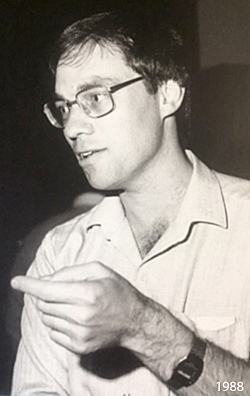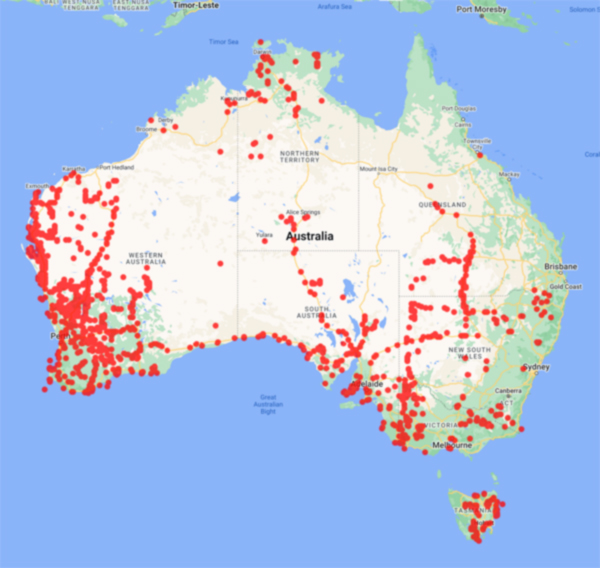
Council of Heads of Australasian Herbaria
Australian National Herbarium
Biographical Notes
 |
Council of Heads of Australasian Herbaria |
 Short, Philip Sydney (1955 - )
Short, Philip Sydney (1955 - )Born Curramulka, South Australia, 27 September, 1955;
Philip grew up on a farm near Curramulka, Yorke Peninsula, SA, and,
having developed an interest in natural history in his early years, studied at
The University of Adelaide, majoring in botany and zoology and graduating
with a BSc in 1976.
The following year, 1977, he finished a BSc (Hons), his thesis 'A
taxonomic revision of the genus Apium L. (Umbelliferae) in Australasia'.
In 1977
he commenced a PhD thesis at Flinders University of South Australia. His
thesis, 'Biosystematic studies in Australian Gnaphaliinae (Compositae: Inuleae)'
was completed in 1982.
In January 1980 he commenced work as a botanist at the National Herbarium of Victoria (MEL). A third of his time was to carry out Cannabis identification, another third involved plant identification for the public and ecologists, the remainder for research. As years progressed more time was available for research, primarily on Australian Asteraceae. For some years he assisted Kuniaki Watanabe in collecting specimens for cytological studies of the family.
An interest in botanical history led Short to suggest the Australian Systematic Botany Society hold a symposium on this topic in Melbourne. Held in May 1988, the proceedings were edited by Short and published in 1990, it titled History of Systematic Botany in Australasia. In 2003 he published In Pursuit of Plants (University of Western Australia Press: Crawley, Western Australia; Timber Press, Inc.: Portland, Oregon), a book concerning the experiences of 19th and early 20th century plant collectors.
During his employment at MEL he was also the Australian Botanical Liaison Officer (ABLO) at Kew in 1991/1992 (Short 2023). At the end of his stay as ABLO he married Emma Powell, co-author with Kew botanist Dick Brummitt of Authors of Plant Names (1992).
Feeling somewhat unsettled in Melbourne he and his family moved north in 1996 where he commenced work at the Northern Territory Herbarium in Palmerston, NT.
He took 13,000 specimens of Brachyscome and other daisies with him, continuing to work on them when time permitted. Unfortunately, as years passed, the time allotted for revisionary work decreased steadily, eventually ceasing, a primary reason for his resignation in early 2012.
He continued going to the herbarium for some time so he could finalise reviews of Brachyscome and some gnaphalioid genera, and assist in the return of the thousands of specimens to their rightful home.
In 2021, after 40 years living away, he returned to his home State, South Australia, becoming an honorary at the State Herbarium of South Australia in 2023.
Publications authored or co-authored by Philip Short.
Sources: Extracted from:
Philip Short, pers. comm. (Feb. 2024).
Philip Short (2023), in George, Alex (Ed), The Australian Botanical Liaison Officer scheme at Kew, 1937-2009, Four Gables Press, Perth, Pp. 222-228.
Portrait Photo: 1988, Alex George
Data from 9,163 specimens
